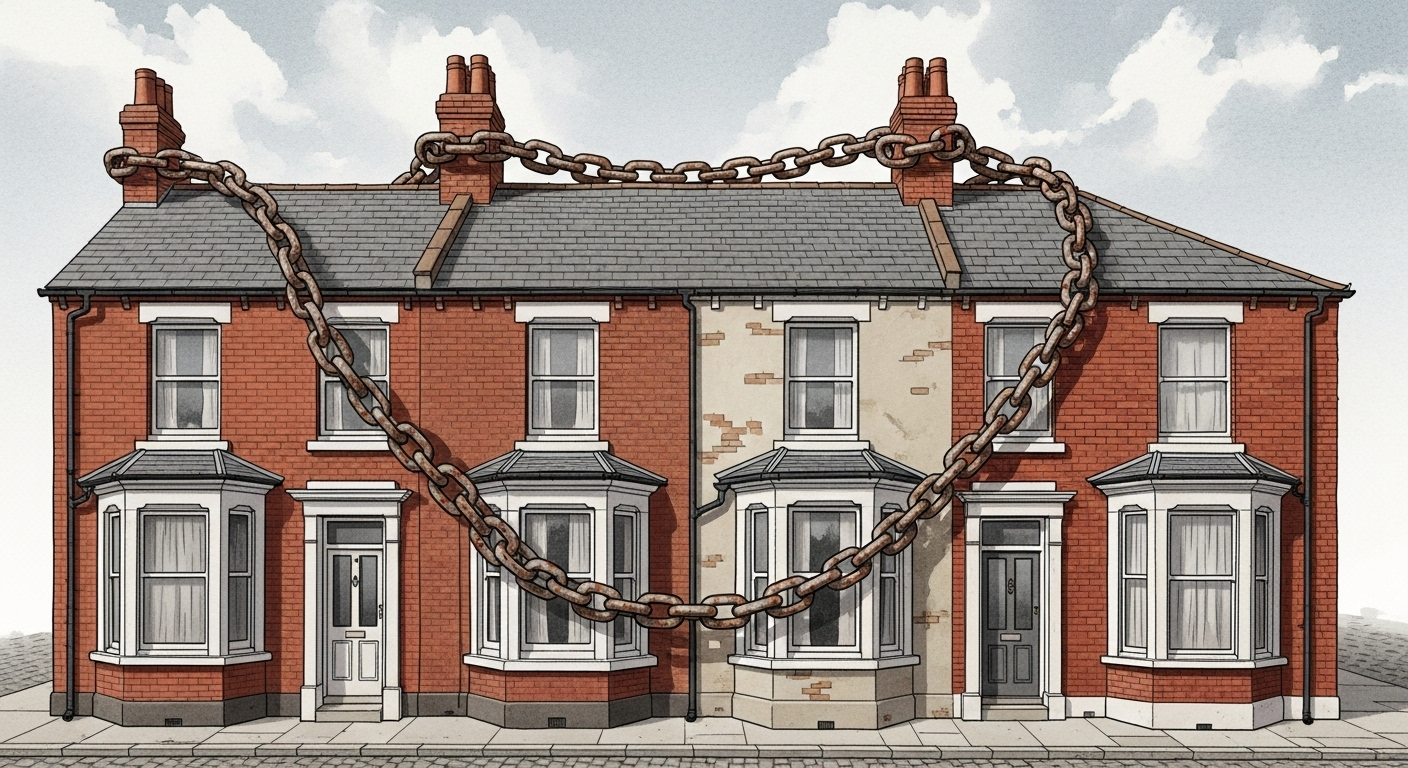Blog
Guide

SDLT (Stamp Duty Land Tax) Changes: Are You Paying Too Much?
SDLT (Stamp Duty Land Tax) Changes: Are You Paying Too Much?
As we approach April 2025, property buyers across England and Northern Ireland face significant
changes to Stamp Duty Land Tax (SDLT) that could substantially impact their finances. With less than
three weeks until these new rates take effect, understanding the implications for your property
purchase has never been more critical. These changes represent one of the most substantial shifts in
property taxation in recent years, potentially adding thousands of pounds to your purchase costs
depending on your circumstances and timing.
Understanding the Upcoming SDLT Changes
Stamp Duty Land Tax has long been a significant consideration for property buyers, but the landscape
is about to change dramatically. Currently, homebuyers enjoy a nil-rate band on the first £250,000 of a
property purchase, providing substantial tax relief, especially for those purchasing at lower price points.
However, from 1st April 2025, this threshold will be halved, with significant implications for all buyers.
Current rates (until 31 March 2025) are as follows:
● No SDLT on the first £250,000
● 5% on the portion from £250,001 to £925,000
● 10% on the portion from £925,001 to £1.5 million
● 12% on any amount above £1.5 million
To illustrate with a practical example: if you purchase a property for £295,000 before the end of March,
you would pay just £2,250 in SDLT (5% on the £45,000 above the threshold).
From 1 April 2025, the new rates will be significantly less generous:
● 0% on the first £125,000
● 2% on the portion from £125,001 to £250,000
● 5% on the portion from £250,001 to £925,000
● 10% on the portion from £925,001 to £1.5 million
● 12% on amounts above £1.5 million
That same £295,000 property purchased after 1 April would incur £4,750 in SDLT – more than double
the current amount. This represents a substantial additional cost that could affect your budget and
purchasing decisions.
First-Time Buyers Face Significant Changes
First-time buyers have benefited from enhanced relief since 2017, but these advantages are also being
curtailed. Currently, first-time buyers pay no SDLT on properties up to £425,000, with reduced rates on
properties between £425,001 and £625,000. This relief has provided vital support for those struggling to
get onto the property ladder. However, from 1 April 2025 , this relief will be considerably restricted.
The threshold at which no SDLT is payable will drop from £425,000 to £300,000, and the upper limit for
the relief will decrease from £625,000 to £500,000. For example, a first-time buyer purchasing a
£500,000 property before the deadline would pay just £3,750 in SDLT, compared to £10,000 if they
complete after 1 April – a staggering £6,250 difference for simply missing the deadline. For those
considering their first property purchase, these changes create a compelling case for acting quickly.
Second Homes and Investment Properties
Those purchasing second homes or investment properties face even steeper increases. Currently,
additional properties attract a 3% surcharge on top of standard rates. From 1 April 2025, these
surcharges will increase significantly, with rates structured as follows:
● 5% on properties up to £125,000
● 7% on the portion between £125,001 and £250,000
● 10% on the portion between £250,001 and £925,000
● 15% on amounts between £925,001 and £1.5 million
● 17% on anything above £1.5 million
Example: If you were purchasing a £300,000 second home, under the current system, you would pay
£17,500 in SDLT. After 1 April, this will increase to £20,000 – an additional £2,500 in tax. For investors with
multiple properties or those looking to expand their portfolios, these changes represent a significant
increase in acquisition costs that could affect investment strategies and returns.
Common SDLT Mistakes That Cost Buyers Thousands
The complexity of SDLT rules leads many buyers to make costly mistakes. One of the most common
errors is relying solely on conveyancers for SDLT advice when many explicitly disclaim this responsibility
in their engagement letters. Typical wording in such letters often states that while the conveyancer
may complete the SDLT return, it remains the client's responsibility to provide correct information. This
disconnect creates a dangerous scenario where neither party takes full ownership of ensuring SDLT is
correctly calculated.
Other common errors include:
● Failing to claim available reliefs
● Miscalculating the 3% surcharge (soon to increase)
● Overlooking specific exemptions such as for transfers between spouses or certain commercial
property transactions
Timing issues are another frequent problem. SDLT is determined by the 'effective date' of a transaction,
which is typically the completion date. However, if a contract is 'substantially performed' earlier, SDLT
liability is triggered at that earlier date.
Ensuring Accurate SDLT Payment: The Role of Professional Advice
Given the complexities and the significant sums involved, professional advice is essential for navigating
SDLT efficiently. A knowledgeable conveyancer can help identify applicable reliefs, calculate correct
amounts, and ensure submissions are made correctly and on time. At Arrow Conveyancing, we take
pride in offering comprehensive SDLT guidance as part of our service, recognising that taxation forms
a crucial part of the overall property transaction.
HMRC ( Her Majesty's Revenue and Customs) has powers to investigate SDLT returns for up to 20
years after submission where they suspect deliberate errors. Underpayments can result in penalties
and interest charges, while overpayments may be difficult to reclaim after the standard 12-month
amendment period.
Strategic Planning in Light of SDLT Changes
With substantial changes on the horizon, strategic planning is key. For those currently in the process
of buying property, accelerating the purchase to complete before 1 April 2025 could yield significant
savings. This is particularly true for first-time buyers and those purchasing properties between £125,000
and £250,000, where the impact of the changes will be most pronounced.
For investors and second-home buyers, the increased surcharges may necessitate a reassessment of
investment strategies. Understanding the effective date for SDLT purposes provides another potential
strategy, especially if you're unable to complete before 1 April. Some buyers may be able to 'substantially
perform' a contract before this date, securing the lower rates even if completion occurs later.
Act Now to Secure Your Position
The approaching SDLT changes represent a significant shift in property taxation that will affect nearly
all buyers in England and Northern Ireland. With the deadline less than three weeks away, those
currently in the property market face important decisions about timing and strategy. The financial
impact of these changes should not be underestimated. Whether you're a first-time buyer racing to
beat the April deadline, an investor reassessing your strategy or a homeowner planning your next
move seeking professional advice now could save you thousands of pounds. With SDLT rates set to
increase significantly, ensuring you're not paying more than necessary has never been more important.
Contact Arrow Conveyancing today to discuss how the upcoming SDLT changes will affect your
property transaction and explore strategies for managing these changes effectively. Visit their
website: www.arrowconveyancing.co.uk calling: 0116 266 5394 or emailing: hello@arrowconveyancing.co.uk
Disclaimer
The materials on this website do not constitute legal advice and are provided for general information only. Whether express or implied, no warranty is given concerning such materials. We shall not be liable for any technical, editorial, typographical, or other errors or omissions within the information provided on this website, nor shall we be responsible for the content of any web images or information linked to this website.
The information contained in this article does not constitute financial advice or recommendation and should not be considered as such. Arrow conveyancing does not offer financial advice and is not regulated by the Financial Conduct Authority (FCA), the authors of this article are not financial advisors and are therefore not authorised to offer financial advice.
Published on :
August 3, 2025








.png)




